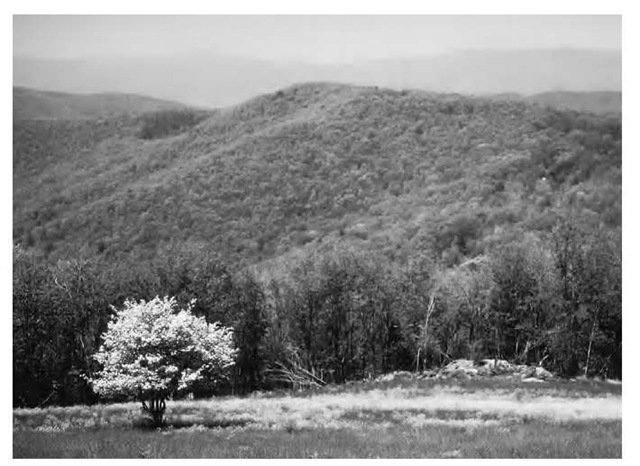The commonwealth of Virginia is a southern Atlantic state on the eastern seaboard of the United States of America. Virginia is the 35th largest state in the United States, with an area of over 42,000 sq.mi. (108,780 sq. km.) and an estimated population of about 7.6 million. Virginia’s state capital is Richmond, located in central Virginia, and the largest city is Virginia Beach, on the coast. Cities in the commonwealth are considered independent and function in the same manner as counties. Virginia’s geography is divided into six different regions, from the tidewater along Chesapeake Bay on the eastern coast, to the Appalachian Plateau in the West. Virginia’s climate is considered mild for the United States but can be quite variable because of significant topographic differences across the state and the influence of the Atlantic Ocean. The regions east of the Blue Ridge, as well as the southern part of the Shenandoah Valley, are considered a humid subtropical climate (Koppen climate classification Cfa). In the mountainous areas between the Allegheny and Blue Ridge mountains in the west, the climate becomes humid continental (Koppen climate classification Dfa).
Virginia was founded on May 13, 1607, at Jamestown, the first permanent English settlement in North America, and is one of the original 13 colonies of the American Revolution. Virginia joined the Union on June 25, 1788, and was the 10th state to ratify the U.S. Constitution. More U.S. presidents (eight) have come from Virginia than from any other state. The current and 70th governor of Virginia is Democrat Tim Kaine, who assumed office in January 2006. Virginia’s geography varies considerably across the state, including the Shenandoah Valley, bordered by the Allegheny and Blue Ridge mountains in the west; the rolling hills of the central piedmont; and the flat eastern coastal plain extending from the piedmont to the Atlantic Ocean. Elevations in Virginia range from sea level to nearly 6,000 ft. at the summit of Mt. Rogers.
The state is divided into six distinct geographical regions: the ridge and valley between the Blue Ridge Mountains to the east and the Appalachian and Allegheny plateaus to the west; the Shenandoah Valley, located within the ridge and valley; the Blue Ridge Mountains between the ridge and valley to the west and the piedmont region to the east; the foothills between the piedmont and the Blue Ridge Mountains; the piedmont between the Blue Ridge Mountains to the west and the tidewater region to the east; and, the tidewater between the fall line to the west and the Atlantic east, including the eastern shore.
The southern area of Virginia’s Shenandoah Valley is considered a humid subtropical climate.
Virginia has five distinct climate regions: tidewater, piedmont, northern Virginia, western mountains, and southwestern mountains. Climate varies significantly across the state because of differences in topography, the influence of the Atlantic Ocean and the Gulf Stream in the east, and the complex pattern of rivers and streams. Much of the precipitation that Virginia receives results from storms associated with low-pressure (cyclone) frontal systems—warm and cold fronts that typically move from west to east across the state, curving northwestward as they reach the Atlantic Ocean. Virginia also experiences occasional tropical storm activity, most often in early August and September, and typically through the venue of the mouth of the Chesapeake Bay. The tropical storms can provide significant amounts of precipitation. In recent years, development trends in northern Virginia extending out from Washington, D.C., have created an urban heat-island effect characteristic of other large urban areas.
In Virginia, emissions of carbon dioxide, one of the primary greenhouse gases that alter the Earth’s climate, have risen by over 30 percent since 1990, driven by economic growth, development patterns, and increased transportation trends. Human-induced climate change is expected to have many effects on Virginia’s weather, wildlife, food production, and water supplies. Sea level in the mid-Atlantic region is estimated to rise several inches in the coming decades, threatening low-lying areas and coastal
developments. Changes in precipitation and temperature regimes have the potential to disrupt agriculture and forestry. Although at present it is rare for a major hurricane to threaten the Virginia coast, hurricanes make the coastal area of Virginia vulnerable. Increased tropical storm activity that might result from climate change would carry the threat of damage to Virginia’s communities.
Virginia has begun to address the issue of climate change in several ways. Virginia is one of several states to have completed, in 2007, a comprehensive Climate Action Plan, manifested as the Virginia Energy Plan. The process of developing a climate action plan includes identifying cost-effective opportunities by which a state may reduce emissions of the greenhouse gases that alter climate. However, unless clear policies are stipulated, climate action plans cannot ensure real reductions in emissions. Virginia adopted a voluntary renewable portfolio standard in 2007, and in May 2007, Governor Tim Kaine announced that Virginia had joined the Climate Registry, a state-sponsored initiative to standardize methods to record and measure greenhouse gas emissions.

